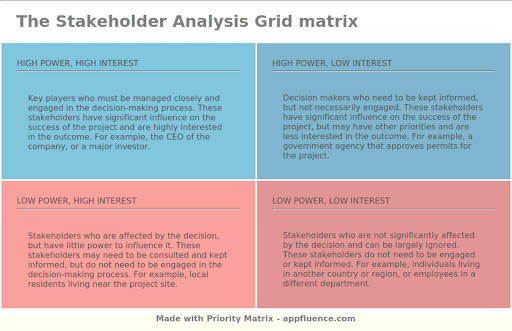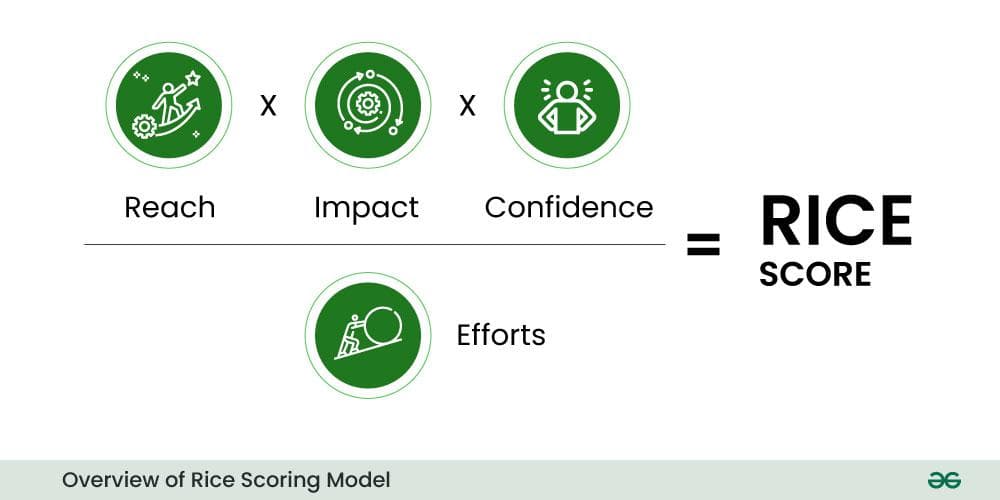
Image Source: Stakeholder Image
Ah, product management. The land of brilliant ideas, cutting-edge technology, and...endless juggling. While product managers often dream of crafting the perfect solution, reality throws a whole circus of stakeholders their way, each with their own priorities and expectations. It's a constant balancing act, akin to juggling flaming bowling pins – a single misstep can send the entire project crashing down.
This article dives deep into the ever-present challenge of stakeholder management in product development. We'll explore the complexities of navigating the needs of executives, engineers, sales teams, and most importantly, the users themselves. But beyond the basic "communicate effectively" advice, we'll equip you with the frameworks, strategies, and psychological insights to master this critical skill.
The Stakeholder Landscape: A Balancing Act of Power and Interest
Imagine a bustling marketplace – that's the world of product development stakeholders. You've got your high-powered executives, laser-focused on ROI. The passionate engineers meticulously craft the product's backbone. The enthusiastic sales team is eager to champion the solution to customers. And of course, the silent majority – the users, whose needs ultimately determine success.
Each stakeholder brings a unique perspective and level of influence. To navigate this dynamic effectively, we need a map. Enter the Stakeholder Mapping Framework, a tool that helps visualize stakeholders based on their power (their ability to influence the project) and interest (their level of involvement).

Image Source: Stakeholder Mapping Framework
By plotting stakeholders on this matrix, you can identify key players and prioritize their needs. For instance, a powerful executive with high interest becomes a critical stakeholder you need to keep closely informed and engaged. Conversely, a low-power, low-interest stakeholder might require periodic updates but wouldn't necessarily be involved in core decision-making.
Prioritization Frameworks: Making Data-Driven Decisions
Let's face it, simply telling everyone to "communicate effectively" isn't enough. When juggling priorities, data becomes your best friend. Enter prioritization frameworks like RICE (Reach, Impact, Confidence, Effort).

Image Source: R.I.C.E Scoring Method
RICE helps you objectively assess potential features by assigning scores based on:
Reach: How many users will be impacted by this feature?
Impact: How significantly will this feature improve the user experience or address a business need?
Confidence: How certain are you about the positive impact of this feature?
Effort: How much time and resources will it take to develop this feature?
By calculating a RICE score for each potential feature, you can prioritize initiatives that deliver the most value for the least effort – a critical skill for demonstrating the true impact of your product vision to stakeholders.
Product Management Guru Marty Cagan emphasizes the importance of data-driven decision making: "The biggest mistake product managers make is falling in love with their ideas. Use data to validate your assumptions and guide your decisions."
But here's the secret sauce: integrating user research data into the mix. User research helps quantify the "Impact" portion of the RICE score, ensuring your prioritization is truly user-centric. Let's say both sales and users have feature requests. Sales might push for a flashy new interface, while user research reveals a core functionality issue causing frustration. By using data from user interviews and testing, you can confidently prioritize the user-centric feature, even if it clashes with sales' initial request.
The Art of Influence: Getting Stakeholders on Board
"Data may be king, but influence is queen" - Unknown
Here's where the psychology of influence comes into play. Understanding how people make decisions can help you craft compelling arguments that resonate with each stakeholder group.
Active listening is key. Pay close attention to stakeholders' concerns and frustrations. This allows you to tailor your communication to address their specific needs. Framing also plays a powerful role. Present your ideas in a way that aligns with each stakeholder's priorities. For example, highlighting the cost-saving benefits of a feature might resonate with executives, whereas emphasizing improved user experience might be more persuasive for the sales team.
Building rapport goes a long way. Stakeholders are more receptive to ideas from someone they trust and respect. Take the time to build genuine relationships with your stakeholders, understand their perspectives, and demonstrate a genuine commitment to their needs.
Communication & Expectation Management: Setting the Stage for Success
Effective communication is the cornerstone of successful stakeholder management. Don't be afraid to over-communicate, especially in the early stages of product development. Don't be afraid to over-communicate, especially in the early stages of product development. Create clear communication plans outlining key milestones and regular updates tailored to each stakeholder group.
Transparency is key. Be upfront about potential challenges and roadblocks. This builds trust and prevents unrealistic expectations. Managing expectations is critical. Don't promise the moon and deliver a pebble. Set realistic timelines and boundaries, and communicate them clearly to all stakeholders.
Cautionary Tales:
A classic example of poor stakeholder management comes from the infamous case of Quibi, a short-form video streaming platform. Quibi launched with much fanfare in 2020, backed by Hollywood heavyweights and a hefty budget. However, they failed to properly manage stakeholder expectations. They promised a revolutionary viewing experience for millennials on the go, but the app was riddled with bugs and lacked compelling content. Furthermore, executives underestimated the impact of COVID-19, which shifted user behavior away from on-the-go entertainment. Quibi shut down just six months after launch, a cautionary tale of what happens when stakeholder expectations aren't managed effectively.
Another example is Google Plus: While Google is a tech giant with a proven track record, Google Plus, their social networking platform, stands as a cautionary tale of stakeholder mismanagement. The product was launched with limited user buy-in and failed to effectively compete with established players like Facebook. Experts point to Google's internal politics and lack of clear communication with stakeholders as key factors in Google Plus's ultimate demise.
For a success story, Slack is a very good example. As a product manager I am sure you must have used Slack in your roles at one time. Slack, the communication platform for teams, provides a successful example of stakeholder management. They actively involve stakeholders (including potential users) throughout the development process, gathering continuous feedback and ensuring the product addresses real user needs. This collaborative approach has fueled Slack's growth and solidified its position as a leader in the communication software market.
Conflict Resolution: Navigating the Choppy Waters
Let's be honest, disagreements are inevitable. When stakeholders clash, it's up to the product manager to navigate these conversations productively.
Focus on the common goal – building a successful product. Actively listen to each stakeholder's perspective and identify the underlying issues. Present data and user research to support your arguments and bridge any gaps in understanding.
Seek common ground. Look for solutions that address the needs of all parties involved. Be prepared to compromise, but don't compromise on core user needs or the product vision.
If tensions rise, take a step back. Sometimes, a cooling-off period allows emotions to settle and fosters a more productive conversation later.
Modern Considerations: Adapting to the Agile Landscape
The product development landscape is constantly evolving. Agile methodologies have become increasingly popular, emphasizing rapid iteration and close collaboration. This necessitates a shift in stakeholder management strategies.
Embrace Transparency and Continuous Feedback:
In an agile environment, stakeholders need to be kept in the loop throughout the development process. Regularly share prototypes, user research findings, and progress updates. Encourage frequent feedback to ensure stakeholders remain engaged and informed.
Prioritize Flexibility:
Agile development thrives on adapting to changing priorities. Be prepared to adjust your roadmap based on user feedback and market demands. Communicate these changes transparently to stakeholders, explaining the rationale behind them.
Embrace Collaboration:
Stakeholders aren't just passive recipients of information. Agile methodologies encourage their active participation. Invite stakeholders to demos, user testing sessions, and brainstorming workshops. This fosters a sense of ownership and increases their buy-in for the final product.
Ethical Considerations: Balancing Profit with Purpose
Product development isn't just about the bottom line. Stakeholder management in today's world requires an awareness of ethical considerations.
Balancing Profit with User Needs:
It's tempting to prioritize features that maximize revenue, but remember, successful products are user-centric. Ensure stakeholder decisions don't compromise the user experience or violate user privacy.
Social Responsibility:
Consider the broader impact of your product. Are there any potential environmental or social consequences? Engage with stakeholders to ensure the product is developed and marketed responsibly.
Melissa Perri, CEO of Productor and author of "Confessions of a Product Manager," emphasizes the importance of ethical product development: "Great product managers don't just build features, they build things that make the world a better place."
Conclusion: The Continuous Climb
Mastering stakeholder management is a continuous learning process. As you navigate the complexities of product development, remember these key takeaways:
Prioritize Understanding: Seek to understand the needs and motivations of all stakeholders.
Embrace Data-Driven Decisions: Use frameworks and user research to make informed product decisions.
Master the Art of Communication: Communicate clearly, transparently, and regularly with all stakeholders.
Be a Master of Influence: Utilize the power of influence to gain buy-in and navigate disagreements productively.
Adapt and Evolve: Remain flexible and adapt your approach to the ever-changing product development landscape.
By prioritizing these principles, you can elevate your stakeholder management skills and ensure a smoother, more successful product development journey. Remember, your stakeholders aren't just a hurdle to overcome – they're valuable allies in bringing your product vision to life.
References
Cagan, Marty. Inspired: How to Create Tech Products Customers Love. Silicon Valley: Wiley, 2008. (This reference supports the quote about data-driven decision making and avoiding falling in love with ideas)
Perri, Melissa. Confessions of a Product Manager: How to Succeed in a Fast-Paced, Ever-Changing World. San Francisco: It Takes a Village Press, 2014. (This reference supports the quote about ethical product development and building things that make the world a better place)
Product School. "How to Manage Product Stakeholders." https://productschool.com/blog/skills/product-management-skills-stakeholder-management (This is a general reference on stakeholder management in product development)
Roman Pichler. "Stakeholder Management Tips for Product People." https://www.romanpichler.com/blog/stakeholder-management-tips-for-product-people/ (This is a general reference on stakeholder management in product development, with a focus on prioritizing effectively)
Slack.com (This is a website reference for the success story of Slack, a company known for its collaborative approach to product development)
